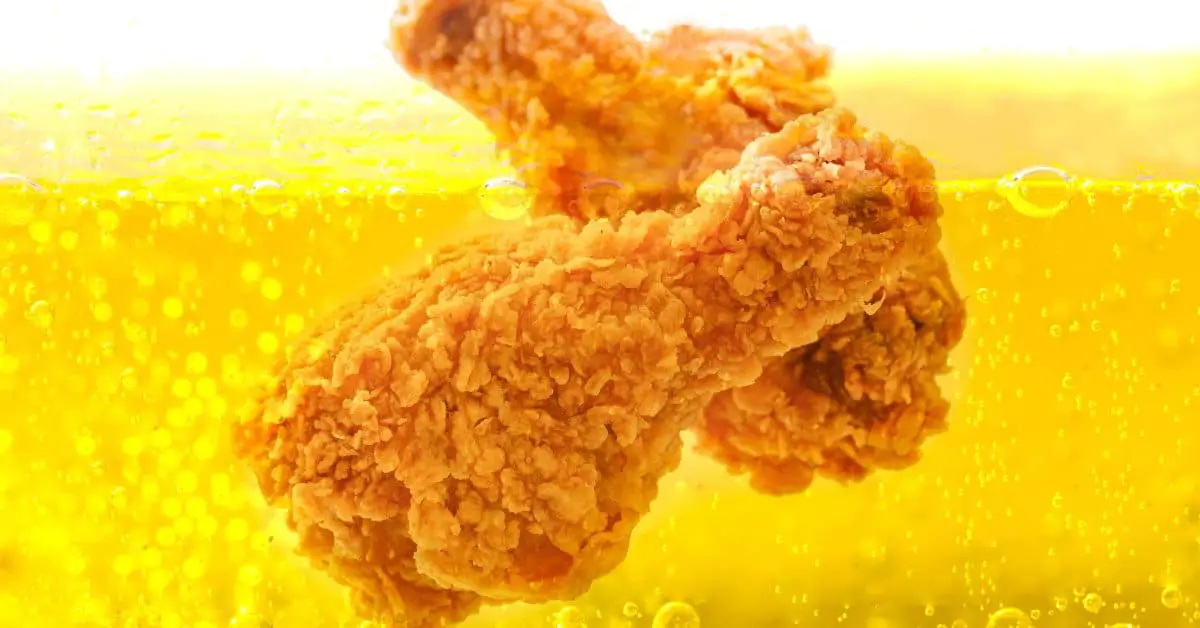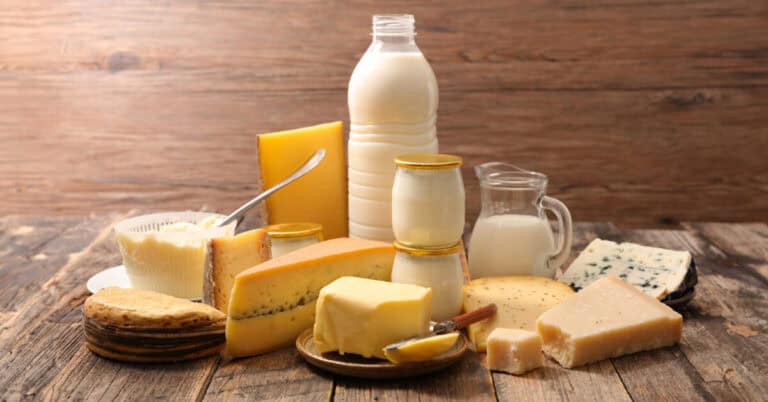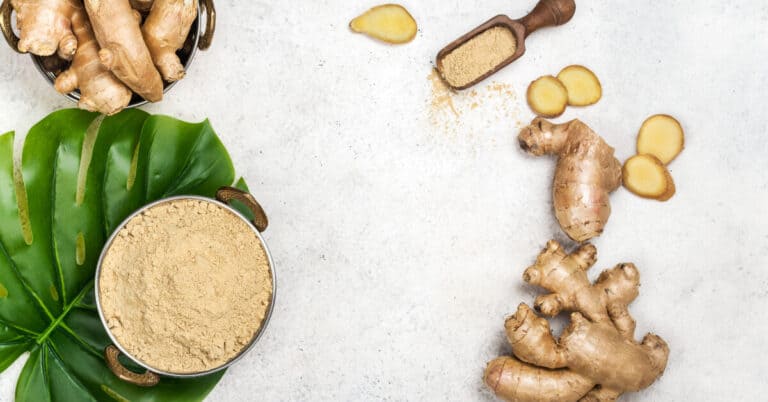Deep Fry Vs. Pan Fry: Which Cooking Method Is Healthier?
When it comes to cooking, there are many methods to choose from, and frying is one of the most popular. But with so many options, it can be challenging to decide which method is best for you. Two popular frying methods are deep frying and pan frying. Both have their advantages and disadvantages, and choosing the right one depends on what you’re cooking and your personal preferences.
Deep frying involves submerging food in hot oil, resulting in a crispy exterior and a moist interior. This method is often used for fried chicken, French fries, and other fried foods. On the other hand, pan frying involves cooking food in a shallow pan with a small amount of oil. This method is ideal for cooking meat, vegetables, and eggs. While both methods can produce delicious results, there are some differences to consider when choosing which one to use.
Deep Frying
When it comes to cooking, deep frying is one of the most popular methods to achieve a crispy texture on your food. Deep frying involves immersing food in hot oil, usually at a temperature between 350°F to 375°F.
Advantages of Deep Frying
The advantages of deep frying include the ability to cook food quickly and evenly. Deep frying also seals in the food’s natural juices, which results in a crispy exterior and a juicy interior. Additionally, deep frying adds an attractive color and flavor to the food.
Disadvantages of Deep Frying
One of the major disadvantages of deep frying is that it requires a large amount of oil, which can be expensive and wasteful. Moreover, deep frying can be dangerous if not done properly. Hot oil can spatter and cause serious burns, and the fear of fires is a real concern. Deep frying can also be unhealthy due to the high temperatures and the use of cooking oil, which is often high in saturated fat and trans fat. This can lead to heart disease and diabetes.
The bottom line is that deep frying can be a quick and delicious way to cook food, but it should be done with caution. Experts recommend using a deep fryer or a large pot with a basket to prevent spatter and fires. Canola oil, peanut oil, and olive oil are good choices for deep frying, while water should never be added to hot oil.
Pan Frying
Pan frying is a popular cooking method that involves cooking food in a shallow cooking pan, such as a skillet, over high heat with a small amount of oil. This method is often used to cook meat, poultry, and vegetables, and it’s a great way to achieve a crispy exterior while keeping the interior juicy and tender.
Advantages of Pan Frying
One of the advantages of pan frying is that it requires less oil than deep frying, making it a healthier alternative. Pan frying also allows you to control the amount of oil you use, which can help reduce the amount of saturated fat in your diet. Additionally, pan-fried foods tend to be less greasy than deep-fried foods, which can be more appealing to some people.
Another advantage of pan frying is that it’s a quick cooking method that can produce delicious results. The high heat and direct contact with the hot pan help to create an attractive color and a crispy exterior. Also, pan-frying is a versatile cooking technique that can be used for a wide variety of recipes.
Disadvantages of Pan Frying
One of the disadvantages of pan frying is that it can be messy. The hot oil can spatter and cause fires, especially if you’re not careful. Also, pan-frying can produce a lot of steam, which can make it difficult to see what you’re cooking. To avoid these problems, it’s important to use a shallow cooking pan with a lid and to keep the heat at a moderate level.
Another disadvantage of pan frying is that it can be less healthy than other cooking methods, such as baking or grilling. The high temperature and direct contact with the hot pan can lead to the formation of harmful compounds that can increase the risk of heart disease, diabetes, and other health problems. To reduce the risk of these problems, it’s important to choose healthy cooking oils, such as olive oil, and to avoid using high temperatures for extended periods of time.
The bottom line is that while pan frying is not the best method for every recipe, it can be a great way to achieve a crispy exterior and a juicy interior. By following the tips and techniques of experts, you can learn to pan-fry foods that are healthy, delicious, and attractive.
Health Considerations
When it comes to frying food, you should consider the health implications. Deep frying requires a lot of oil, which can add a significant amount of calories to your food. Pan frying, on the other hand, requires less oil and can be a healthier alternative.
When choosing an oil to fry with, it’s important to consider the amount of saturated and trans fats it contains. These types of fats can increase your risk of heart disease and diabetes. Olive oil is a healthier option because it contains more unsaturated fats, which can help lower your risk of these diseases.
Another important factor to consider is the amount of oil that is absorbed by the food during frying. Deep-fried foods tend to absorb more oil, which can increase the number of calories and fat in your meal. Pan-fried foods, on the other hand, absorb less oil and can be a healthier option.
It’s also important to note that deep frying can produce harmful compounds, such as acrylamide, which is linked to cancer. Pan frying, on the other hand, produces less of these compounds.
In summary, when it comes to frying food, pan frying is generally a healthier option than deep frying. It requires less oil, produces less harmful compounds, and can be a better choice for those concerned about their health. When choosing an oil to fry with, opt for healthier options like olive oil and be mindful of the amount of oil your food absorbs.
Choosing the Right Equipment
When it comes to frying, choosing the right equipment is essential. The equipment you need depends on the type of frying you plan to do. Here are some things to consider:
Deep Fryer
If you plan on doing a lot of deep frying, investing in a deep fryer might be the way to go. Deep fryers are specifically designed for frying food in hot oil. They come with a basket that makes it easy to remove food from the oil, and some models even have a built-in thermostat that helps maintain the oil temperature. Electric deep-fryers are a popular option for home use because they are easy to use and don’t require a stovetop.
Frying Pan or Skillet
If you don’t want to invest in a deep fryer, a frying pan or skillet can be used for shallow frying. Cast iron and stainless steel pans are popular choices for frying because they can handle high heat and are durable. When using a frying pan, it’s important to use enough oil to fully submerge the food and to keep an eye on the temperature to prevent burning.
Wok
For stir-frying, a wok is the best option. The sloping sides of a wok make it easy to toss food while cooking, and the high sides prevent food from spilling over. Woks can be used for deep frying as well, but it’s important to use caution and to monitor the temperature of the oil.
Pot
If you plan on frying large items like chicken or turkey, a pot is the way to go. A pot with a lid can be used to control the splatter and to keep the oil from overheating. Make sure to use a pot that is deep enough to fully submerge the food and to leave enough space at the top to prevent the oil from boiling over.
Shallow Cooking Pan
If you’re looking to fry food with less oil, a shallow cooking pan can be used. These pans are designed to distribute heat evenly and are great for cooking food like fish or vegetables. When using a shallow pan, it’s important to use enough oil to cover the bottom of the pan and to keep an eye on the temperature to prevent burning.
No matter what type of frying you plan on doing, make sure to use caution and to follow the manufacturer’s instructions for your equipment. With the right equipment and a little practice, you can achieve perfectly fried food every time.
Conclusion
In conclusion, whether to deep fry or pan fry depends on the dish you are preparing and your personal preference. Both methods have their advantages and disadvantages.
If you want a crispy exterior and a moist interior, deep frying is the way to go. This method is great for foods like french fries, chicken wings, and donuts. However, deep frying requires a significant amount of oil and can be messy.
On the other hand, pan frying requires a minimal amount of oil and is a healthier option. This method is great for foods like fish, chicken breasts, and vegetables. Pan frying also allows you to control the temperature and the amount of oil you use.
In terms of taste and texture, deep frying and pan frying can produce different results. Deep frying tends to produce a crispy exterior, while pan frying can result in a more tender and juicy interior.
Experts suggest that the best method depends on the dish you are preparing and your personal preference. Some dishes are better suited for deep frying, while others are better suited for pan frying.
The bottom line is that both deep frying and pan frying can produce delicious results. It’s up to you to decide which method to use based on the dish you are preparing and your personal preference.
Frequently Asked Questions
Which is healthier: pan frying or deep-frying and why?
Pan frying is generally considered healthier than deep-frying since it uses less oil. However, it’s important to note that the type of oil used and the cooking temperature also play a role in determining the healthiness of the cooking method. Pan frying can be a healthier option if you use a healthy oil like olive oil and cook at a lower temperature. Deep-frying, on the other hand, requires more oil and the high temperature can cause the oil to break down and release harmful chemicals.
Is it healthier to shallow fry or deep fry?
Shallow frying is generally considered healthier than deep-frying since it uses less oil. However, like with pan frying, the type of oil used and the cooking temperature also play a role in determining the healthiness of the cooking method. Shallow frying can be a healthier option if you use a healthy oil like olive oil and cook at a lower temperature. Deep-frying requires more oil and the high temperature can cause the oil to break down and release harmful chemicals.
What are the benefits of pan frying?
Pan frying is a great cooking method for foods that are delicate or have a crispy coating. It’s also a healthier option than deep-frying since it uses less oil. Additionally, pan frying allows you to easily monitor the cooking process and adjust the heat as needed.
How to pan fry?
To pan fry, start by heating a small amount of oil in a pan over medium heat. Once the oil is hot, add your food to the pan and cook until it’s golden brown on one side. Flip the food over and cook until it’s golden brown on the other side. Use tongs or a spatula to flip the food and avoid piercing it with a fork, as this can cause the juices to escape.
Pan fry fish?
To pan fry fish, start by patting it dry with a paper towel. Season the fish with salt and pepper, and dredge it in flour or breadcrumbs. Heat a small amount of oil in a pan over medium heat and add the fish to the pan. Cook until it’s golden brown on one side, then flip it over and cook until it’s golden brown on the other side. Serve with lemon wedges and tartar sauce, if desired.
What is the difference between pan frying and sautéing?
Pan frying and sautéing are similar cooking methods, but they differ in the amount of oil used and the size of the food being cooked. Pan frying is typically used for larger items like chicken breasts or pork chops, while sautéing is used for smaller items like diced vegetables or shrimp. Additionally, sautéing uses less oil than pan frying and the food is cooked quickly over high heat.








